West invests heavily in weapons, but very little in global development

West invests heavily in weapons, but very little in global development. Cartoon:Carlos Latuff

West invests heavily in weapons, but very little in global development. Cartoon:Carlos Latuff

Editor's Note:
China and Italy are representative of Eastern and Western civilizations. In the eyes of 75-year-old Italian sinologist Pier Francesco Fumagalli (Fumagalli), who has dedicated decades to promoting cultural exchanges between China and Italy, the Global Civilization Initiative proposed by China holds great vision for constructing a new global civilization and mobilizing a worldwide renaissance. In a recent interview with the Global Times (GT), Fumagalli shared his story of learning Chinese, his understanding of the Belt and Road Initiative, and the prospects of China-Italy relations.
GT: When did you start learning Chinese? We know that you have also studied various other Eastern languages. In comparison, do you find Chinese difficult to learn? What makes it unique?
Fumagalli: I wanted to learn Chinese when I was studying at the University of Milan in the 1970s, but there weren't as many opportunities to learn Chinese back then. I remember that the Israeli government provided me with a scholarship, so I went to Jerusalem to study Hebrew and Arabic. After a year, I returned to Milan and studied Eastern languages and ancient Indian languages at the Catholic University of the Sacred Heart. After graduating, I pursued a doctoral degree at the Biblioteca?Ambrosiana. The librarian at the time hoped I could engage in Sinology research. He not only introduced the library's collection of ancient Chinese books to me but also gave me a Chinese dictionary that was over a hundred years old. I truly began learning Chinese in 1994 at the Istituto Italo Cinese Vittorino Colombo and went to China for the first time in 1995 to study Chinese at the School of International Cultural Exchange (predecessor of the School of International Education) of Northwest University in Xi'an.
Since I have dabbled in many languages in the Eastern region, I find learning Chinese not too difficult, but mastering it requires a great deal of effort. In my opinion, each language has its own difficulties. For example, Chinese characters and pronunciation are relatively challenging, so one needs to practice writing and speaking more. However, the grammar is relatively easy. Most other Eastern languages are spelled using alphabets, which makes writing easier, but the grammar is more difficult.
GT: Besides Chinese, what else do you need to study and understand to become a sinologist?
Fumagalli: As a sinologist from a European country, I believe that besides learning Chinese, one should also understand various fields such as China's history, art, technology, culture, economy, politics, etc. If conditions permit, one should also learn Go and calligraphy. Of course, it is also important to understand the culture of ethnic minority regions in China and neighboring countries. As Confucius said, "Isn't it a pleasure to study and practice what you have learned"?
GT: From your first visit to China until now, what changes in China have impressed you the most?
Fumagalli: The scene of my first visit to China is still fresh in my memory. I flew from Milan to Beijing and then to Xi'an. The plane was brand new, with few passengers, and the flight attendants were very friendly. After arriving in Xi'an, I was picked up by a special car from Northwest University to the campus. The teachers and classmates at the International Cultural Exchange School were very polite to me, and the learning atmosphere was relaxed and pleasant. I also made many friends. This experience left a good impression on me. I am still in contact with many teachers and classmates, and in 2003, Professor Zhou Jiaxiang from Northwest University published a monograph on ancient Chinese literature at the Braidense National Library. Every time I go to Xi'an, I visit them.
From 1995 to 2019, I visited China more than 30 times, sometimes three times in a year. I think China has changed a lot! In 1995, there were many bicycles on the streets of Xi'an, but few cars. I remember some villages in Shaanxi were still using oxen to plow the fields. On Wangfujing Avenue in Beijing, I experienced riding a "huangbaoche" (a type of traditional Chinese taxi) for the first time. When I visited a friend's house, they lived in a 60-square-meter house with four people, but now it is 160 square meters!
GT: Has your interest and research in Chinese culture also influenced your family?
Fumagalli: My family also loves Chinese culture. My nephew also studied in China. Every time my Chinese friends come to Italy, I invite them to my home. My family is very happy, and both sides are very enthusiastic when they meet.
GT: You have published Biblioteca Ambrosiana with Sino-Western Cultural Exchange, could you talk about the original intention of publishing this book? What kind of cooperation does Biblioteca Ambrosiana, the oldest library in Milan, have with China? What Chinese books or artworks are collected?
Fumagalli: This book was published in 2008 and was a 60th birthday gift from Zhejiang University and Zhejiang International Cultural Exchange Association. It brings together my speeches and papers from Northwest University, Zhejiang University, Chongqing University, and the University of Hong Kong over the years. The purpose is to let Chinese students understand Western culture and carry out exchanges and cooperation with Biblioteca Ambrosiana in Milan.
The Biblioteca Ambrosiana was established in the early 17th century and includes academies, library, art gallery, and museum, all of which are closely related to the Renaissance. The academy collaborates with universities around the world to study global cultures, technologies, arts, religions, and philosophy. The library is open to students and professors from all over the world, providing free access to classical and modern materials. The art gallery and museum collect artworks and manuscripts from many Renaissance masters such as Raphael, Leonardo da Vinci, and Caravaggio.
In addition, we also collect ancient books and cultural artifacts from around the world, such as ancient Indian artifacts, feather cloaks made by the Tupinambá people in South America, and the Arabic Koran. The collection related to China includes classic works on the Ming Dynasty's bureaucracy, the Map of the Ten Thousand Countries of the Earth during the Ming Dynasty, and a table said to be brought back from China by Italian voyager Marco Polo.
GT: One time you saw the painting Taipingtu created by Chinese freehand flower and bird painter He Shuifa in 2010. The painting's juicy and vibrant apples quickly inspired you to invite him to speak at an academic festival in Italy. What attempts have you made to promote communication between contemporary art fields in Italy and China? What special feelings do you have? What is the perception of Italian audiences or readers toward art and artists from the East?
FumagalliIn May 2008, I went to Hangzhou and Beijing and invited scholars such as Ren Yanli, Chen Cunfu, Huang Shijian, who study Western religion, philosophy, and engage in cultural communication between China and the West, as well as painter He Shuifa, to join the newly established Chinese Cultural Research Center in the Ambrosiana Academy under the Biblioteca Ambrosiana. The center has become a new bridge for cultural communication and cooperation between Italy and China, serving the peoples of both countries. We introduce our cooperation in the Biblioteca Ambrosiana Yearbook "Asiatica Ambrosiana" every year.
Currently, our Academy has established cooperative relationships with 500 professors, scholars, and artists from around the world, including Wang Meixiu, who studies world religions, Wang Xiaochao, who studies foreign philosophy and religion, and artist Cui Ruzhuo. In 2022, we invited Professor Zhao Tingyang from the Chinese Academy of Social Sciences to introduce his "Tianxia System" in Milan, which I believe is a very important event.
GT: China and Italy are outstanding representatives of Eastern and Western civilizations. China has held many exhibitions of Chinese-Italian cultural exchanges in recent years, such as the "Tota Italia - Origins of a Nation," held at the National Museum of China in 2022, which was well received by the audience. The leaders of both countries also attach great importance to such communication. What is your opinion on the Global Civilization Initiative proposed by China?
Fumagalli: The Global Civilization Initiative proposed by China is an important initiative and shows great foresight in building a new global civilization. This initiative will help realize the Chinese Dream and promote world peace and human development, leading to a new renaissance in the world.
GT: China and Italy are respectively the starting point and endpoint of the ancient Silk Road. Over the years, you have been studying the cultural heritage cooperation and exchanges under the BRI. Since China proposed the BRI 10 years ago, it has not only made significant contributions to the world economy and the development of participating countries but also promoted cultural and people-to-people exchanges with relevant countries and regions. How do you view the cooperation between China and Italy, as well as China and Europe, over the past 10 years?
Fumagalli: The BRI involves numerous countries and regions as well as various aspects, including culture, economy and trade, infrastructure construction, art, science and technology, and politics, among others. From the collection of the Map of the Ten Thousand Countries of the Earth at the Biblioteca Ambrosiana, I can see that the China-proposed BRI can also be called the "Ten Thousand Belts and Roads of the Ten Thousand Countries" (or "Multiple Belts and Roads of the World)". In addition to the trade-oriented "Belt and Road," the high-speed rail construction-oriented "Belt and Road," there are also the education-oriented "Belt and Road," the culture-oriented "Belt and Road," the science and technology-oriented "Belt and Road," the art-oriented "Belt and Road," and so on.
Both China and Europe have rich and ancient cultures and histories. China has 56 ethnic groups, while EU has nearly 30 countries. In terms of the prospects for cooperation between Europe and China under the BRI, I believe our cooperation is very significant!
GT: Like you, many senior Italian sinologists mostly have the experience of studying in China in the 1980s and 1990s. What advice do you have for the new generation of sinologists emerging in Italy or Europe, or for young people who are particularly interested in Chinese culture?
Fumagalli: My dream is for young Italian and European sinologists to collaborate more with young Asian sinologists and young scholars from China to promote sinological research worldwide. These collaborations can take place through various research institutions, such as universities, technology companies, and medical institutes.
I hope that Italian sinologists can work together with Chinese experts to translate and publish Leonardo da Vinci's Codex Atlanticus, a manuscript consisting of 12 volumes and 1,119 pages. This would be a collaboration that could last for many years.
GT: What are your expectations and suggestions for strengthening people-to-people exchanges between China and Italy?
Fumagalli: I hope that communication among the public becomes more diversified, for example, by strengthening communication through news media, sports, music, and art. Even in Italy, clubs can be established for traditional Chinese culture and activities such as Go and Tai Chi.
In recent years, we have collaborated with the Italy-China Association to organize exhibitions of Leonardo da Vinci in Beijing, Hong Kong, and other places. This December, thanks to the cooperation with the Italo-Chinese Institute of Milan, an exhibition about Leonardo da Vinci is planned to be held in Shanghai, while an exhibition featuring contemporary Chinese painter Zeng Fanzhi will be held in Milan.
GT: Finally, I'd like to ask you about China-Italy relations. How do you evaluate the cooperation between China and Italy in recent years in politics, economics, and other fields? What are your expectations for the future of the relationship between the two countries?
Fumagalli: My new book, Estetica, Scienza e Fede: 400 anni dell 'esplorazione della Biblioteca Ambrosiana (Aesthetics, Science and Faith: 400 Years of Exploration of the Ambrosian Library), has just been published by Zhejiang University Press, and it contains my suggestions and expectations. In short, I hope that the friendship between Italy and China will deepen as major cities of both countries and friendly organizations continue to exchange in various fields. The Biblioteca Ambrosiana in Milan and the Italy-China Association will also be involved. Although the road ahead is long, I would like to use Chairman Mao Zedong's poem, "when the mountain flowers are in full bloom, she will smile mingling in their midst," to express my optimism about the further development of the relationship between the two countries.
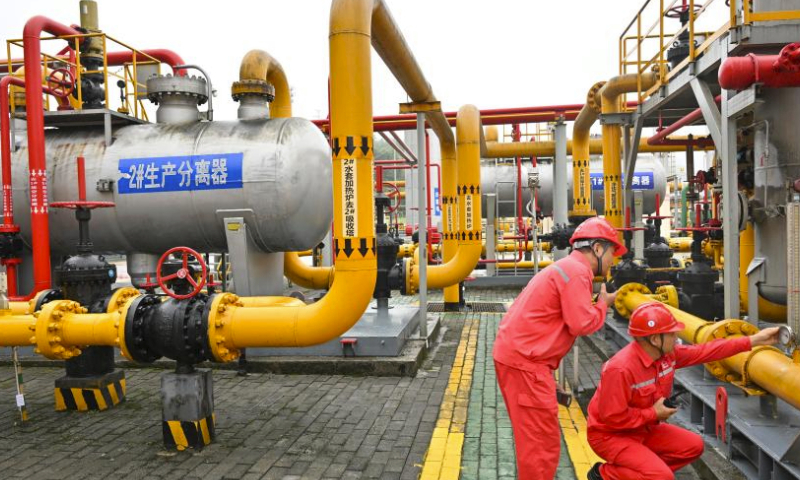
The Fuling shale gas field in Southwest China's Chongqing Municipality, has produced over 60 billion cubic meters of natural gas, according to its operator China Sinopec, Xinhua reported on Sunday, adding the attainments have helped shore up China's energy security.
The Fuling shale gas field, an important gas source in West-to-East Gas Transmission pipeline project, was first established in December 2012 and started operation in March 2014, distributing natural gas to more than 70 cities along Yangtze River Economic Belt.
The shale gas field has a proved reserve of 900 billion cubic meters. In 2022, Fuling shale gas field produced 7.2 billion cubic meters of natural gas and 6,998 tons of shale oil, according to Xinhua.
The low-carbon-emission feature of the shale gas made it as an important energy source to promote China's green transformation too.
China first discovered domestic shale gas reserves in the 90's, but lacked the necessary technology and expertise to exploit it.
After decades of technology research and development, operators like Sinopec have achieved to grasp core technologies.
Apart from breakthroughs in shale gas and oil exploration technology, the complicated geometric structure of shale gas field and the high costs on new drills represent new challenges.
The United Nations said that shale gas remains a traditional energy source that also produces carbon dioxide, but it is much less than coal and gasoline, which makes it a bridge from traditional energy to solar energy, wind power and hydropower.
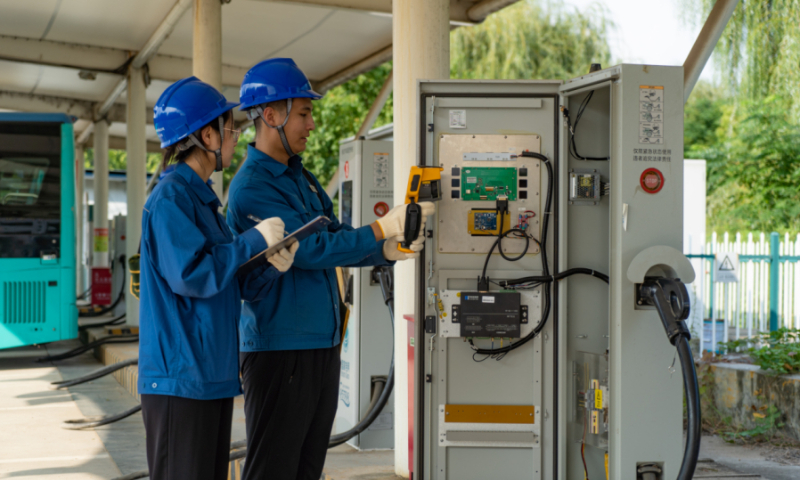
On Sep. 21st, in the hometown of Confucius, Qufu, Jining, Shandong Province, the staff workers from State Grid Jining Power Supply Company are inspecting the power operation data of the scenic spot through the smart power preservation application in front of the computer, to ensure safe and reliable power supply.
With the Mid-Autumn Festival and the National Day rapidly approaching, the 19th Nishan World Civilization Forum and 2023 China (Qufu) International Confucius Culture Festival are about to be held, and Qufu "Three holes", Nishan Holy Land and other scenic spots have an endless stream of tourists, ushering in the peak of electricity consumption. State Grid Jining Power Supply Company applies multiple means such as unmanned aerial vehicle autonomous inspection, remote camera monitoring, infrared temperature measurement, etc., to carry out inspections of power facilities, do a good job in the operation and maintenance of electric vehicle charging piles, and ensure reliable power supply in scenic spots and comfortable power consumption for tourists.
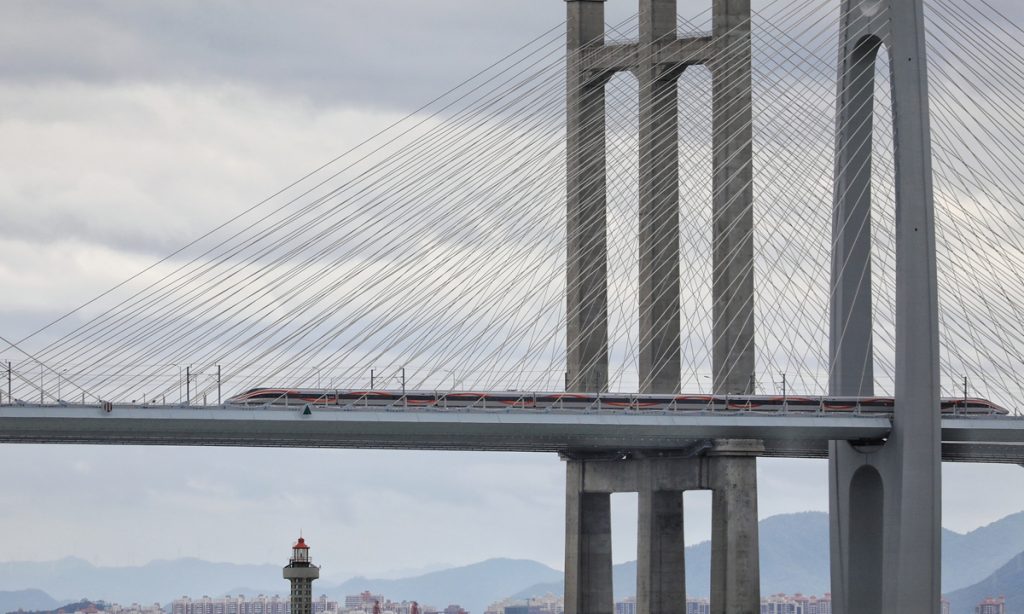
China's first sea-spanning high-speed railway capable of a top speed of 350 kilometers per hour is expected to start service in East China's Fujian Province on Thursday. The line shortens the travel time between Fuzhou and Xiamen to at most 55 minutes in a bid to enhance the connectivity between the two major cities in the province, the Xinhua News Agency reported on Wednesday.
With a total length of 277 kilometers, the railway starts from Fuzhou, passes through Putian, Quanzhou and Xiamen and ends in Zhangzhou.
The high-speed railway is yet another intelligent railway route to enter commercial service following the Beijing-Zhangjiakou high-speed railway and Beijing-Xiong'an high-speed railway, demonstrating new progress in the intelligentization of China's high-speed railway technology.
The railway was designed using the latest modeling technology based on digital information, which realized the integrated management of high-speed railway's design, construction and operation.
The BeiDou Navigation Satellite System, intelligent robots and environmentally friendly materials were adopted to facilitate the construction of cross-sea bridges. An intelligent command and dispatch system is used to ensure trains stay on schedule and operate efficiently. A big data analysts system can monitor and report all potential weather disasters, ensuring the safe operation of each train on the route.
The opening of the railway connects multiple cities along Southeast China's coast and forms a belt full of tourism sites. It will also form a high-quality traffic channel connecting Ningbo in East China's Zhejiang Province and Guangzhou in South China's Guangdong Province with other high-speed railway routes that have already been completed or are still under construction.
Wang Jianmin, a senior cross-Straits expert at Minnan Normal University in Fujian Province, told the Global Times that the opening of the Fuzhou-Xiamen high-speed railway shows China has the technological ability to build a cross-Straits railway.
"What's more, it also offers expectations for people on the both sides of the Straits that the railway will be the foundation of a cross-Straits railway in the future," said Wang.
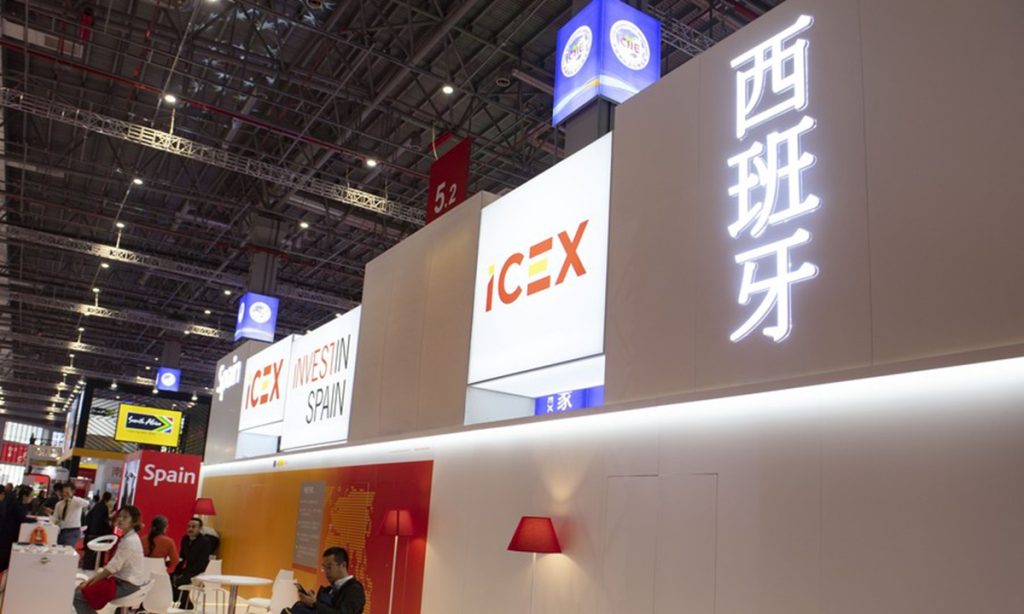
The China International Import Expo (CIIE) is a "perfect platform" for exchanging ideas within the global fashion and textile industry, a senior representative of the Spanish fashion giant Inditex told Xinhua in an interview on Thursday.
It will be the fourth time that Inditex, which owns popular brands such as Zara, Bershka, Massimo Dutti and Stradivarius, will take part in the trade fair. CIIE is aimed at economic globalization, and opening the Chinese market to the world.
"The CIIE is a perfect platform for us to keep learning and exchanging ideas with the most inspiring and also relevant industry players, stakeholders and partners," Amy Yu, Inditex's Greater China Head of Communication, told Xinhua.
"This is an international platform that welcomes both domestic and international stakeholders, so it's definitely an opportunity for us to connect both at home and abroad," Yu added.
This year will be the sixth time that the CIIE, which is hosted by China's Ministry of Commerce and the Shanghai Municipal People's Government, will be held in Shanghai's National Exhibition and Convention Center. The trade fair runs from Nov. 5 to 10.
Some 150,000 business professionals from over 100 countries and regions around the world are expected to participate, say the expo's organizers. Events at the fair include networking meetings, seminars and workshops, and new product releases.
Zara opened its first store in China's Hong Kong in 2004, followed by another in Shanghai in 2006, where Inditex's Asia regional HQ is also based. The company now operates 50 stores around China for four of its brands (Zara, Zara Home, Massimo Dutti and Oysho).
"China is not only a retail market where we operate stores and different brands, but also a talent center, and a place where we continuously get inspired," said Yu. "Our business activities started in China as early as the nineties, when we started cooperation with the local textile suppliers."
The Spanish company's involvement in China extends beyond business concerns to social engagement, Yu underlined.
The company worked with the China Youth Development Foundation and 33 schools for the benefit of more than 5,000 students in China, and with the China Environmental Protection Foundation for clothes donation and recycling projects, she said.

The number of China-Europe Chang'an freight train, connecting Xi'an in Northwest China's Shaanxi Province, with Moscow, Russia, has exceeded 20,000 trips since entering service on November 11, 2013, Xi'an International Trade & Logistics Park, the operator of the train service told the Global Times on Saturday.
The 20,000th Chang'an freight train carrying 165 vehicles departed from Xi'an on September 28, which was also the 3,947th freight train departing from the city in 2023. As of September 28 this year, the number of departures by Chang'an train saw a 29.7 percent increase year-on-year. The freight volume hit 3.5 million tons, up by 34.7 percent year-on-year.
2023 marked the 10th anniversary of the Chang'an freight train's launch as well as the China-proposed Belt and Road Initiative (BRI). In the past decade, the number of the transport routes has grown from one to 17, as the China-Europe freight train service covers the entire Eurasia continent.
In addition, the category of the Chang'an train service has increased from merely drilling equipment in the beginning to now include textile products, machinery equipment, electronic products, rubber products, auto vehicles and other products. Grain, wood and minerals from the countries joining the Belt and Road Initiative are among the goods being imported to China.
The maximum capacity of the Xi'an International Trade & Logistics Park can reach 5.4 million standard containers and 66 million tons of freight per year, and can facilitate 15 trains each day. A representative from the park pledged to further improve cargo transport facilities, attract investment and build domestic currencies settlement system, in order to facilitate the development of the BRI.
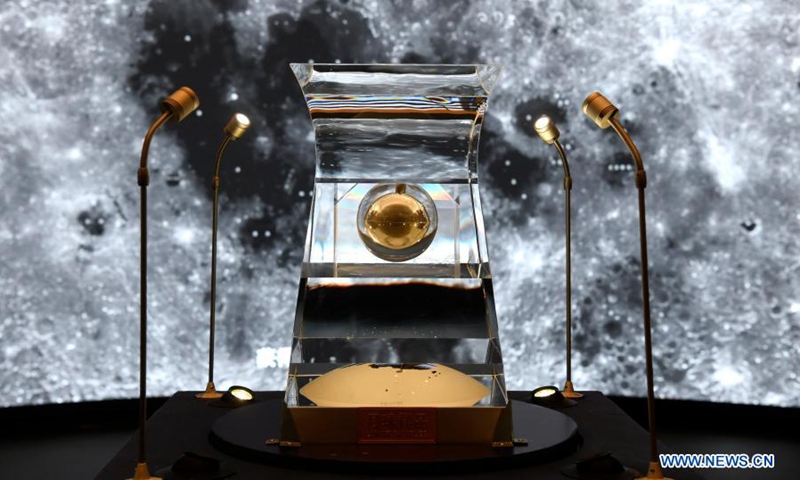
Chinese scientists and their international partners have learned more about the moon after studies and research into lunar soil samples from the Chang'e-5 (CE-5) mission. In the two latest discoveries, researchers found hints of a new source of water on the moon for future explorers and revealed the activities of young basalt on the moon.
The Chang'e-5 mission brought 1,731 grams of lunar minerals back to Earth. The landing site in the Northeastern Oceanus Procellarum basin of the moon was considered to have one of the youngest basalt units on the lunar surface with rich heat-generating elements such as uranium, thorium and potassium.
In a report published in Nature on Monday, Chinese researchers and their partners in the UK report the abundance, hydrogen isotope composition and core-to-rim variations of water measured in 32 impact glass beads extracted from lunar soil returned by the Chang'e-5 mission.
Impact glass beads are major components of lunar soil. But the water inventory of impact glass beads has not yet been investigated in detail, despite these glassy beads being potential candidates for playing a significant role in a lunar surface water cycle. To investigate this possibility, scientists carried out a systematic characterization of the petrography, major element composition, Raman characteristics, water abundance and hydrogen isotope composition on the impact glass beads returned by the CE5 mission, aiming to identify and characterize the missing water reservoir on the moon's surface.
Scientists estimate that the amount of water hosted by impact glass beads in lunar soils may reach up to 270 trillion kilograms. "Our direct measurements of this surface reservoir of lunar water show that impact glass beads can store substantial quantities of solar wind-derived water on the moon and suggest that impact glass beads may be water reservoirs on other airless bodies," according to the report.
Hui Hejiu, a professor at Nanjing University, told the media that in the future deep space exploration by human beings, impact glass beads may be used as a candidate water source to provide supplies when the efficiency of collecting glass beads and extracting water is high.
In another report published by Astrophysical Journal Letters in early March, Chinese scientists said they combined Fe and Mg isotope analyses with a comprehensive study of petrology and mineralogy on two CE-5 basalt clasts, the Global Times learned from the Nanjing-based Purple Mountain Observatory under the Chinese Academy of Sciences.
CE-5 basalts are the most evolved basalts to date on the moon.
"Our new Fe-Mg isotope data indicate that the young CE-5 mare basalts possess a hybrid mantle cumulate source that incorporates both early- and late-stage LMO cumulates, which may play an important role in the generation of the late lunar volcanism," read the article.
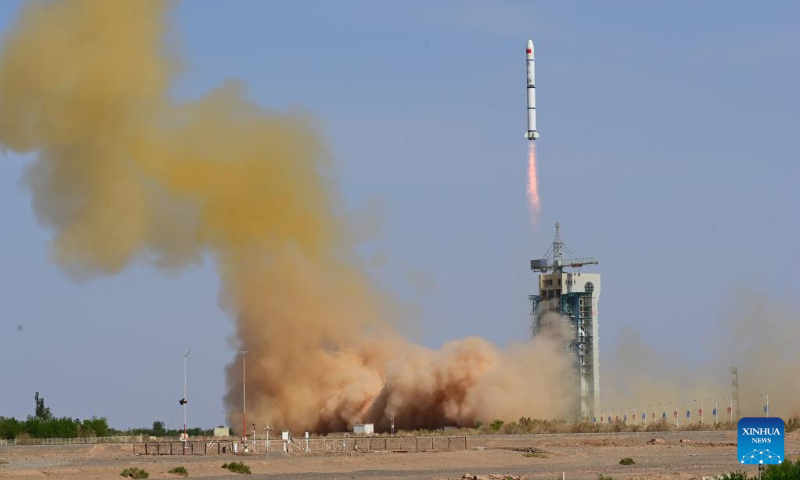
On Sunday afternoon, China successfully launched the Macao Sicence-1 space satellite for scientific use , the first of its kind. The satellite was jointly developed by mainland and Macao agencies, Global Times learned from China National Space Administration (CNSA.)
The satellite was successfully launched into preset orbit via a Long March-2C carrier rocket from the Jiuquan Satellite Launch Center in Northwest China at 4 pm on Sunday.
This was the 474th flight mission of the Long March carrier rocket series. A scientific experiment satellite named Luojia-2 was sent into space at the same time.
As the world's first low-latitude geomagnetic field and space environment scientific detection satellite, the Macao Sience-1, featuring the highest geomagnetic field detection accuracy in China, will significantly improve the level of the country's space magnetic measurement technology, the CNSA said in a statement to the Global Times on Sunday.
The project was jointly initiated by the CNSA and the government of China's Special Administrative Region (SAR) of Macao and the detection data will be shared by both sides, the CNSA noted.
Such project explored a new path for cooperation between mainland and the Macao SAR, adding new impetus to the regional development of the Guangdong-Hong Kong-Macao Greater Bay Area and the high-quality development of aerospace technology, the CNSA said.
After the satellite is launched into orbit, it will be able to function as a good complementary observation point together with the European Swarm satellite and the Zhangheng-1 satellite, realize the measurement and research of the Earth's low-latitude magnetic field and space environment changes and monitor the temporal and spatial changes of the magnetic field in the South Atlantic geomagnetic anomaly area.
Additionally, the satellite will provide valuable observational data for human beings to study the evolution of the geomagnetic field for a long time, to further promote China's research progress in the fields of lithospheric magnetic field, origin of geomagnetic field, space weather forecast, geomagnetic navigation, spacecraft space operation safety and high-precision satellites.
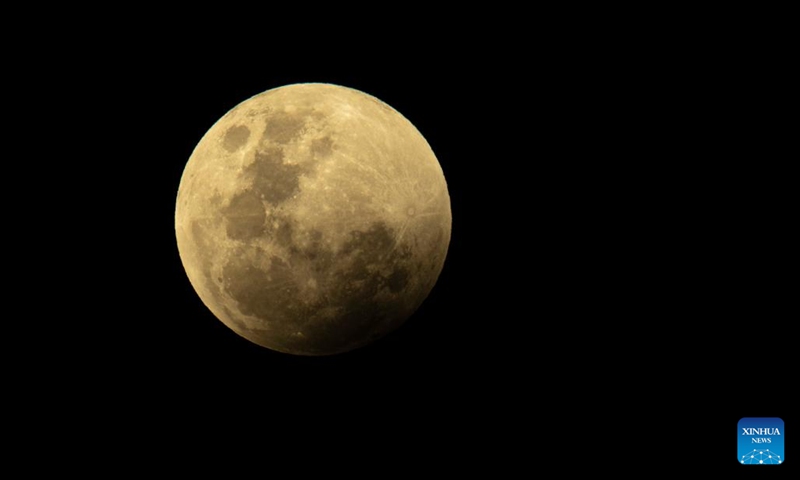
"Venezuela is going to the Moon!" Gabriela Jimenez, Venezuela's vice president and minister of science and technology, wrote with great excitement in a twitter post on Tuesday after she signed a joint statement on the China-led International Lunar Research Station (ILRS) with Zhang Kejian, administrator of the China National Space Administration (CNSA) on Monday via video link.
According to Jimenez, Venezuela has become the first country in Latin America to join the project.
According to the CNSA official release, the joint statement says the two sides will engage in extensive and in-depth cooperation in the areas of ILRS demonstration, engineering implementation, operation and application, including jointly demonstrating scientific goals, joint design, instrument development, scientific instrument deployment, scientific and technological experiments, data sharing and analysis, education and training.
China and Venezuela have a long history of cooperation in the aerospace field and have achieved remarkable results. The signing of this joint statement marks a new step in the cooperation between the two countries and has significant implications for promoting scientific and technological progress as well as economic and social development, read the statement.